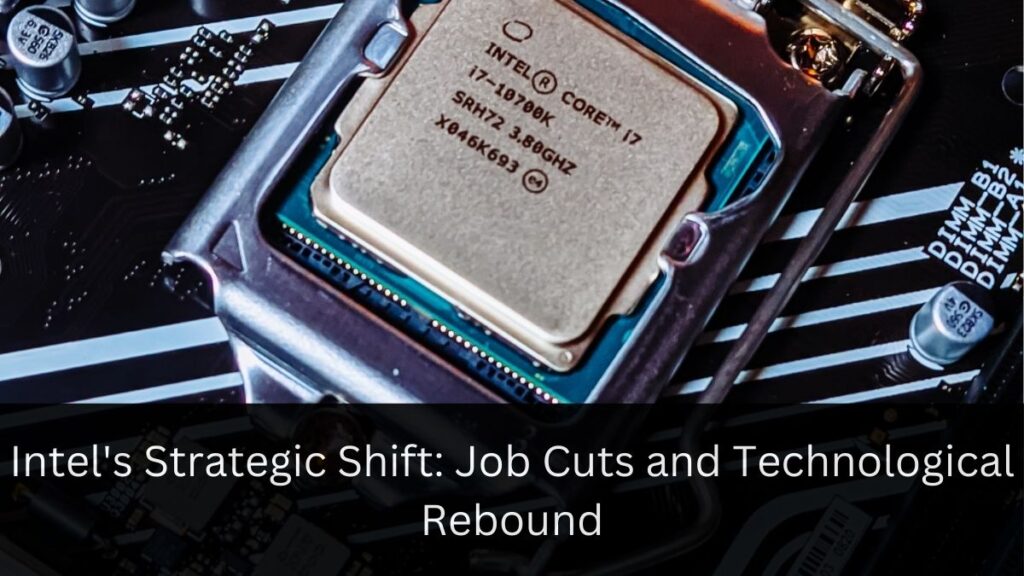In the ever-evolving landscape of the semiconductor industry, tech giant Intel finds itself at a crossroads. The company, once a dominant force in chip manufacturing, is now facing the dual challenges of market share erosion and the need to catch up with competitors in emerging technologies. To address these issues, Intel is embarking on a significant restructuring effort, which includes substantial job cuts and a renewed focus on technological innovation.
The Current State of Intel
Market Pressures and Competition
Intel, a household name in the world of computer processors, has been grappling with intense competition from rivals like Advanced Micro Devices (AMD) and Nvidia. These companies have made significant strides in recent years, particularly in the development of cutting-edge semiconductors designed for artificial intelligence applications. This shift in the industry has left Intel struggling to maintain its market position and adapt to changing demands.
The personal computer market, long a stronghold for Intel, has also experienced fluctuations in demand. As consumers and businesses alike reassess their computing needs in a post-pandemic world, Intel faces the challenge of navigating unpredictable sales patterns for its core products.
Financial Performance and Investor Expectations
Intel’s financial performance has reflected these challenges. The company’s revenue growth has stagnated, with analysts projecting flat second-quarter revenue compared to the previous year. However, there’s a glimmer of hope on the horizon, with modest growth expected in the latter half of 2024. If these projections hold true, Intel could see its first annual revenue increase since 2021, with estimates suggesting a 3% rise to $55.7 billion for the full year.
The Restructuring Plan
Job Cuts: A Difficult but Necessary Step
In response to these challenges, Intel is preparing to implement a significant workforce reduction. While the exact number of job cuts has not been officially announced, sources familiar with the company’s plans suggest that thousands of positions may be eliminated. This move, while undoubtedly difficult for affected employees, is seen as a necessary step to streamline operations and free up resources for future investments.
Intel is no stranger to such measures, having reduced its workforce by approximately 5% in 2023. The company ended that year with 124,800 employees, down from its previous headcount. These ongoing efforts to optimize its workforce are part of a broader cost-reduction strategy aimed at saving up to $10 billion by 2025.
Investing in the Future: R&D and Manufacturing
Despite the job cuts, Intel is not solely focused on cost-cutting. Under the leadership of CEO Pat Gelsinger, the company is doubling down on research and development investments. This push for innovation is aimed at improving Intel’s technological capabilities and helping the company reclaim its position at the forefront of the semiconductor industry.
One of Intel’s bold strategies involves expanding its manufacturing capabilities. The company plans to build factories that will not only produce chips for its own use but also manufacture semiconductors for other chipmakers. This move into the foundry business represents a significant shift in Intel’s business model and could open up new revenue streams.
To support this ambitious manufacturing plan, Intel recently hired Naga Chandrasekaran from Micron Technology as its new chief global operations officer. Chandrasekaran will oversee the company’s overall manufacturing efforts, a critical role as Intel seeks to revitalize its production capabilities.
The Road Ahead: Challenges and Opportunities
Catching Up in AI and Emerging Technologies
One of the most pressing challenges for Intel is closing the gap with competitors in the field of artificial intelligence. Companies like Nvidia have made significant headway in developing specialized chips for AI applications, a market that is experiencing rapid growth and attracting substantial investment.
Intel’s efforts to catch up in this space will require not only significant financial investment but also a cultural shift within the organization. The company will need to foster an environment of innovation and agility to compete effectively in this fast-moving sector.
Balancing Cost-Cutting with Innovation
As Intel navigates this period of transition, it faces the delicate task of balancing cost-reduction measures with the need for continued innovation. While job cuts and operational streamlining can improve short-term financial performance, the company must ensure that these moves don’t compromise its ability to innovate and compete in the long term.
Rebuilding Market Confidence
Perhaps one of the most crucial challenges for Intel is rebuilding confidence among investors, customers, and industry observers. The company’s recent struggles have led to some skepticism about its ability to regain its former market dominance. However, if Intel can successfully execute its restructuring plan and demonstrate tangible progress in key technological areas, it may be able to shift market perceptions and regain lost ground.
A Pivotal Moment for Intel
The semiconductor industry stands at the cusp of a new era, driven by advancements in artificial intelligence, edge computing, and other emerging technologies. For Intel, this moment represents both a significant challenge and a tremendous opportunity. The success of its restructuring efforts and its ability to innovate in key areas will likely determine whether the company can reclaim its position as a leader in the semiconductor industry or face a future of diminished relevance.
As Intel moves forward with its plans, the tech world will be watching closely. The outcome of this strategic shift could have far-reaching implications not just for Intel, but for the broader semiconductor industry and the future of computing technology. In the face of these challenges, Intel’s resilience and capacity for innovation will be put to the test, potentially shaping the company’s trajectory for years to come.

